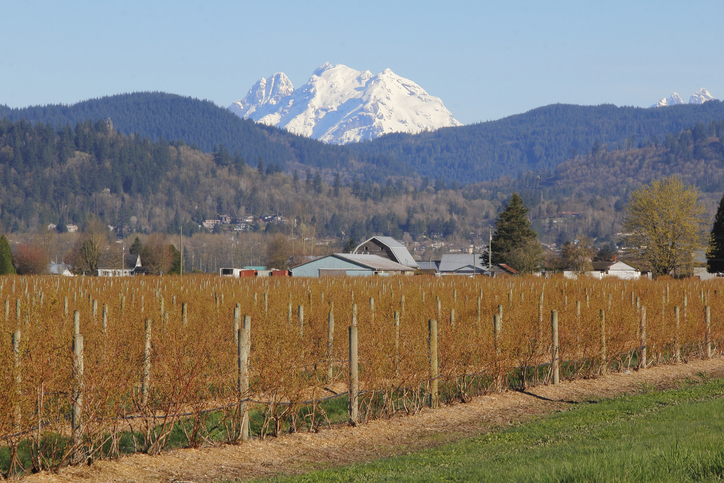A report published by the Fraser Valley Regional District (FVRD) in partnership with the BC Agriculture & Food Climate Action Initiative has determined that freshet flooding could cost Fraser Valley agriculture industry $1.1 billion.
The Fraser River’s annual peak flow—the freshet—typically occurs between mid-May and early July. The risk of flooding occurs when there is a large snowpack combined with sudden warm temperatures – in some cases combined with heavy spring precipitation – resulting in higher peak flows.
The FVRD is home to 2.4 per cent of the total land farmed in B.C. and 14 per cent of the province’s farms, but generates 38 per cent of the provincial gross annual farm receipts. It is the most intensively farmed area in Canada. The study found that almost 30,000 hectares, over 40 per cent, of the Fraser Valley’s Agricultural Land Reserve lands are vulnerable to freshet flooding.
“The economic value of agriculture in this region is over three billion dollars per year. With a major freshet flood, almost a third of the sector could be impacted, and that doesn’t include all of the non-agricultural infrastructure that would be affected,” says Jason Lum, Chair of the FVRD.
Utilizing mapped flood extents, flood losses were calculated for two flood scenarios, one with present climate conditions and one applying a future climate scenario (year 2100). A major flood event, similar to the flood in 1894, would cause over $800 million in damage to agricultural crops, buildings, and equipment. The economic impacts to FVRD communities associated with the agricultural flood losses would be $1.1 billion.
For blueberry grower, Jason Smith, putting a dollar value on agriculture in the region is an important step towards highlighting the need for action to mitigate the risks associated with flooding.
“As a grower, I’m extremely worried about the extreme weather. For perennial crops, it is not only the threat of flooding but also seepage during the growing season that kills the plants roots and makes the fields impassable for harvest” he says, adding that some of his fields that flooded in the 2012 freshet still have not fully recovered.
This report is one of the actions identified in the Fraser Valley Adaptation Strategies to better understand potential impacts of climate change to changing freshet flood risk in the Fraser Valley. Funding for this study is part of a $300,000 investment in the implementation of the Fraser Valley Regional Adaptation Strategy by the federal and provincial governments through Growing Forward 2, a federal-provincial-territorial initiative.
A summary report is available as is a the full report at the Climate Action Initiative.













